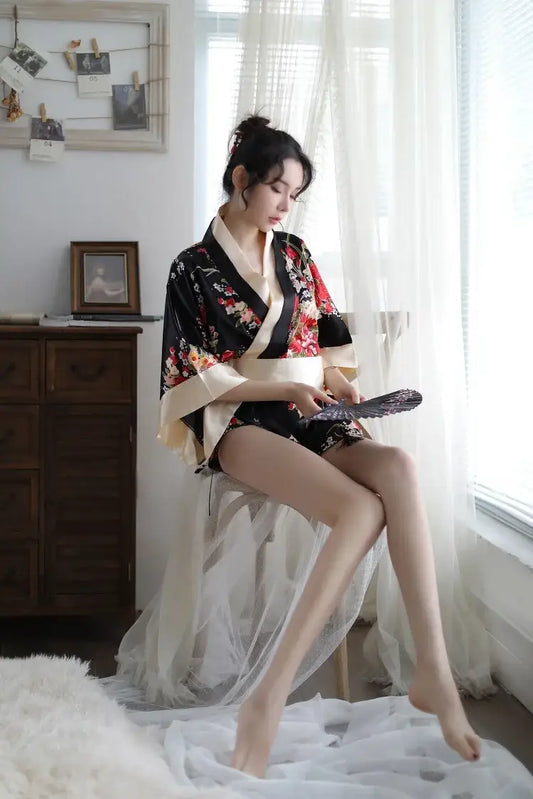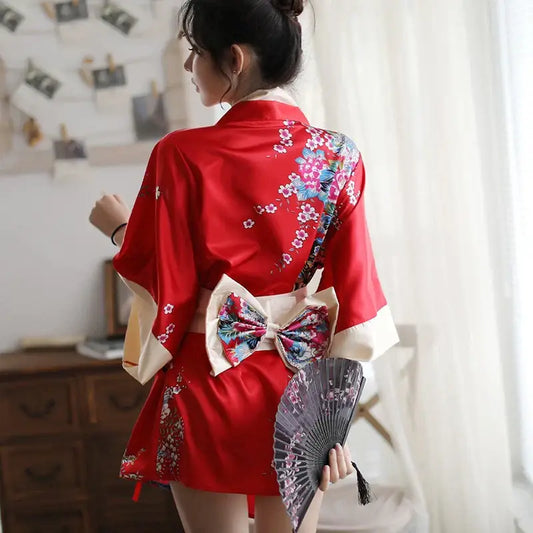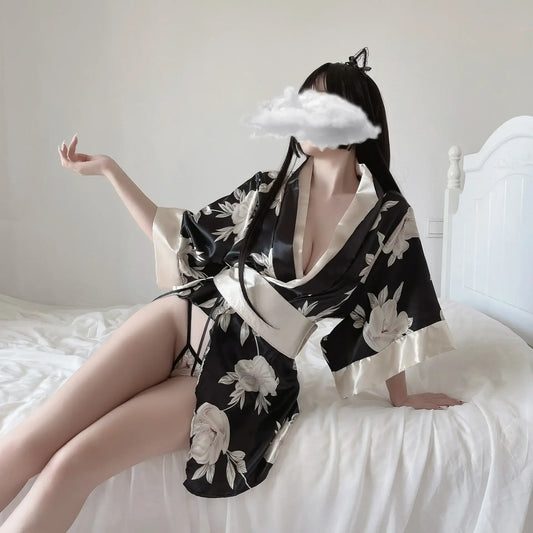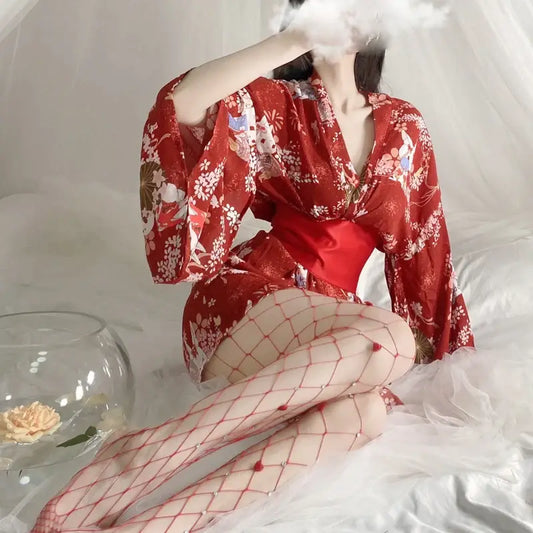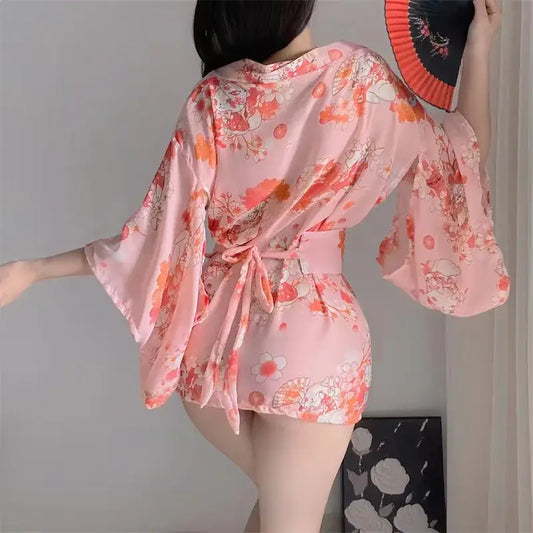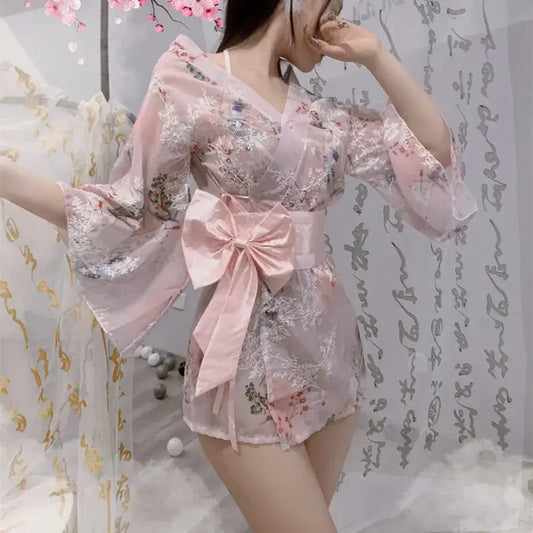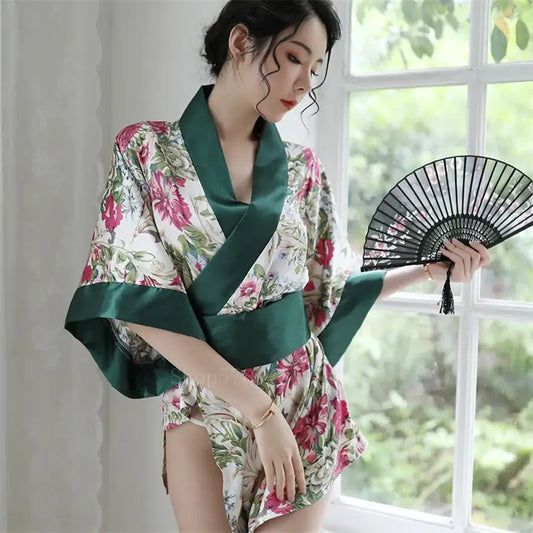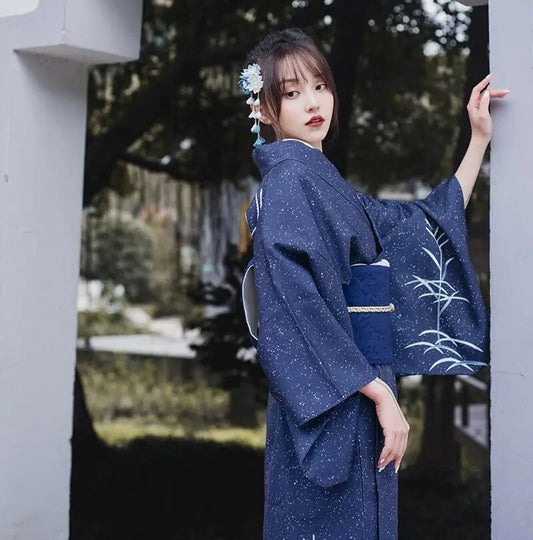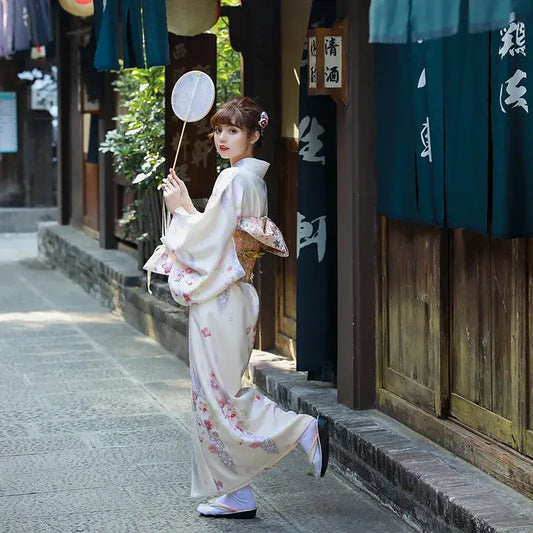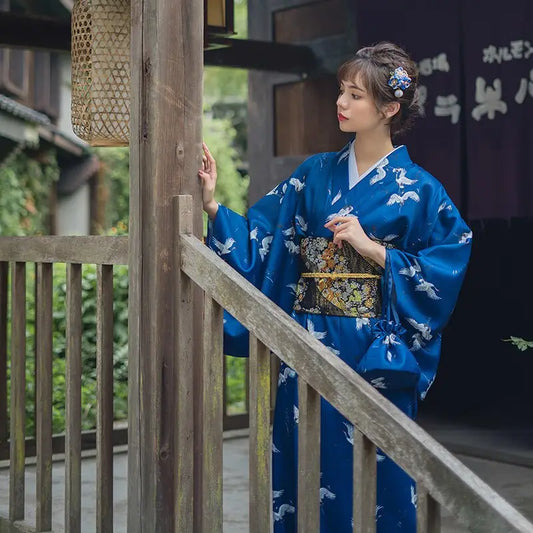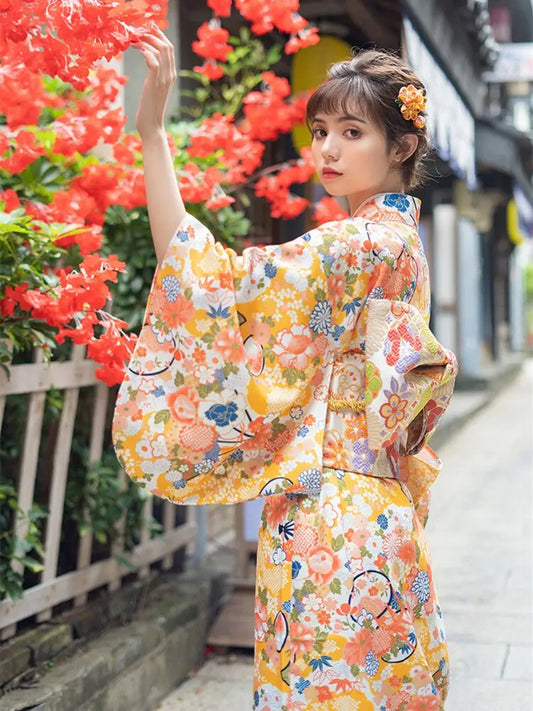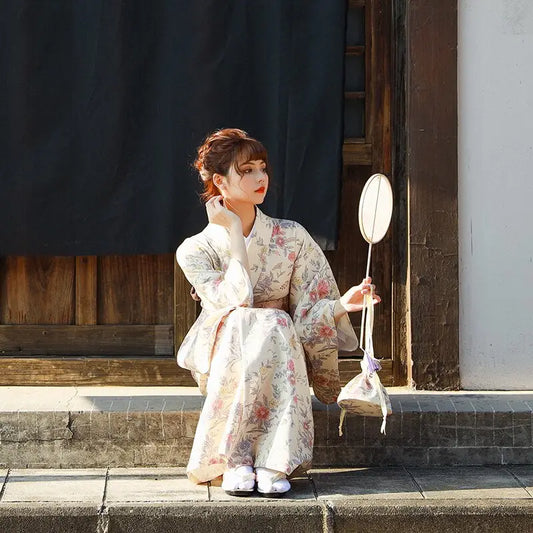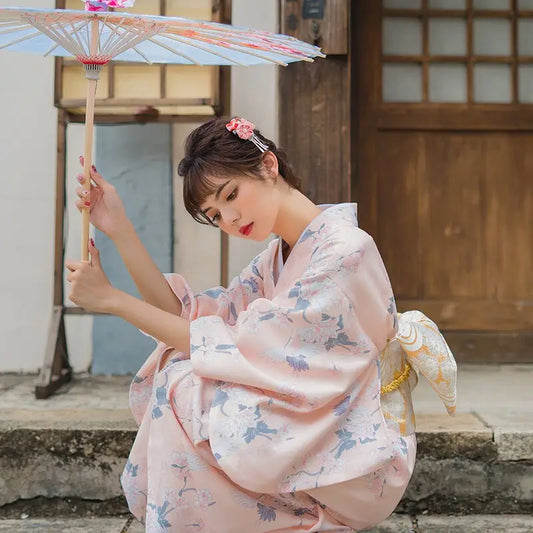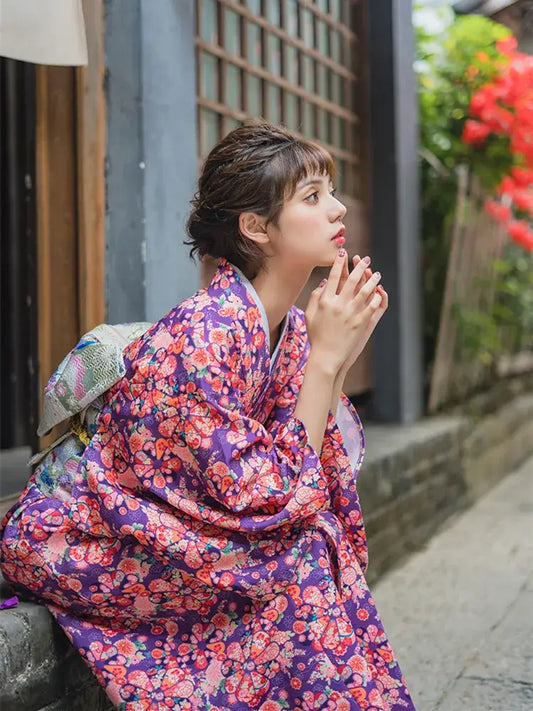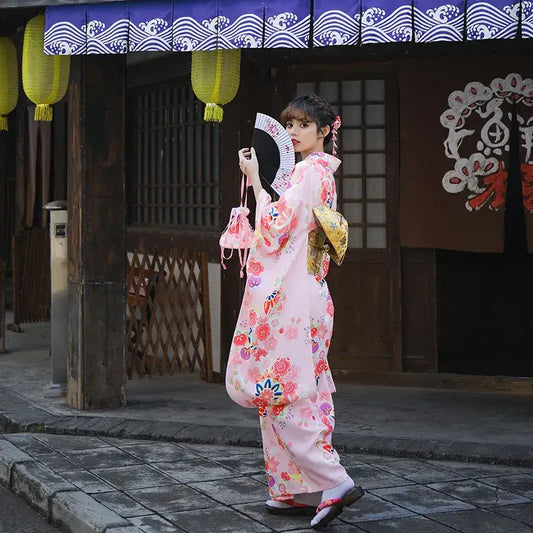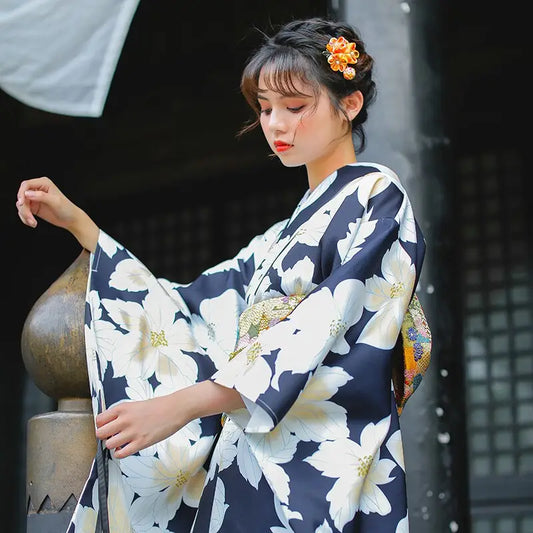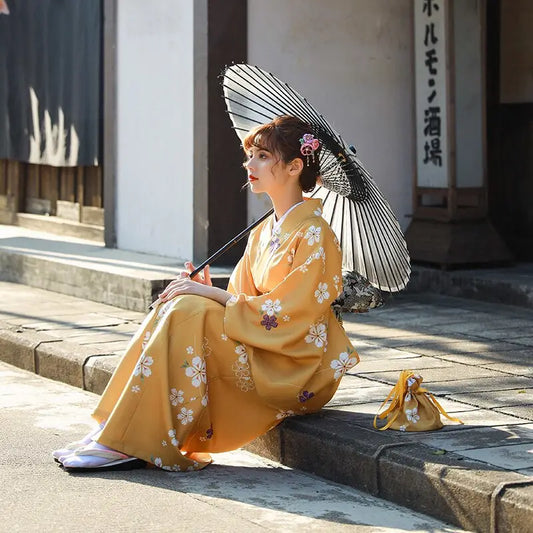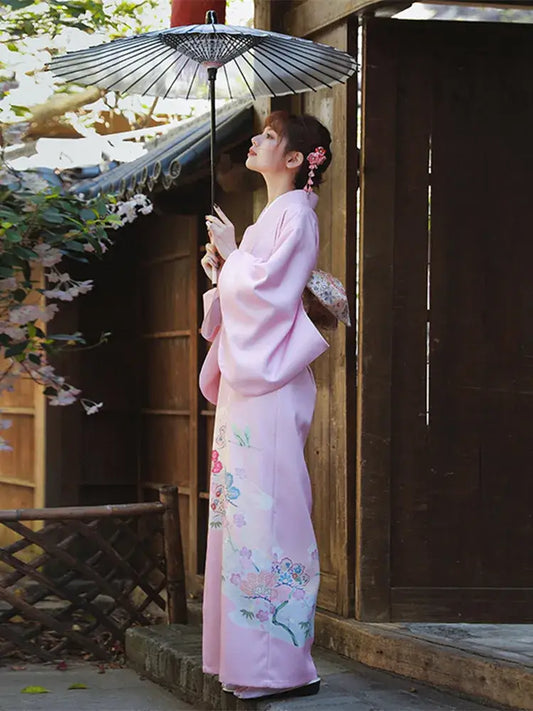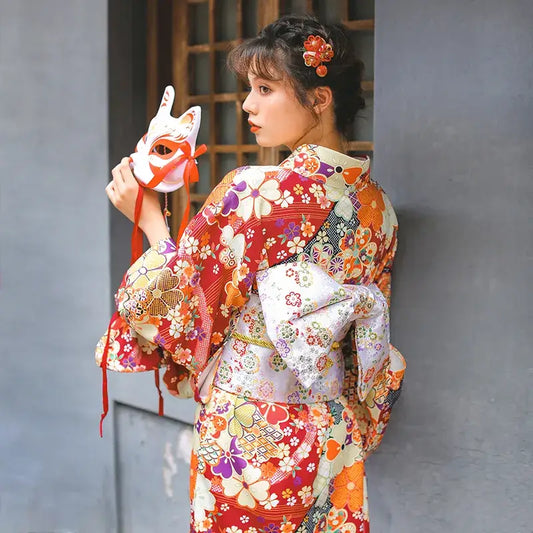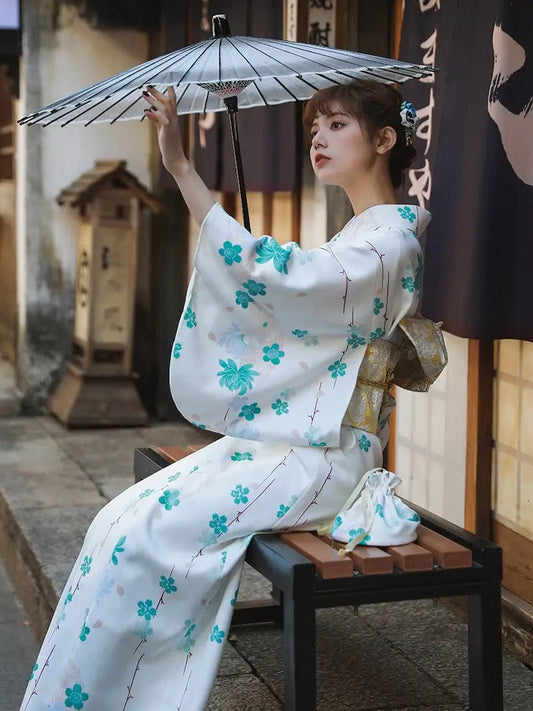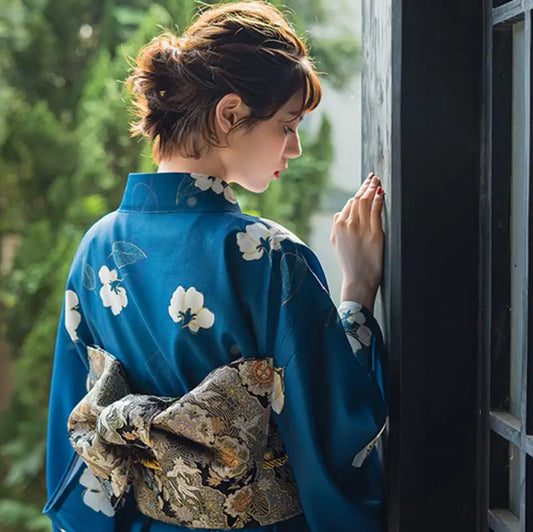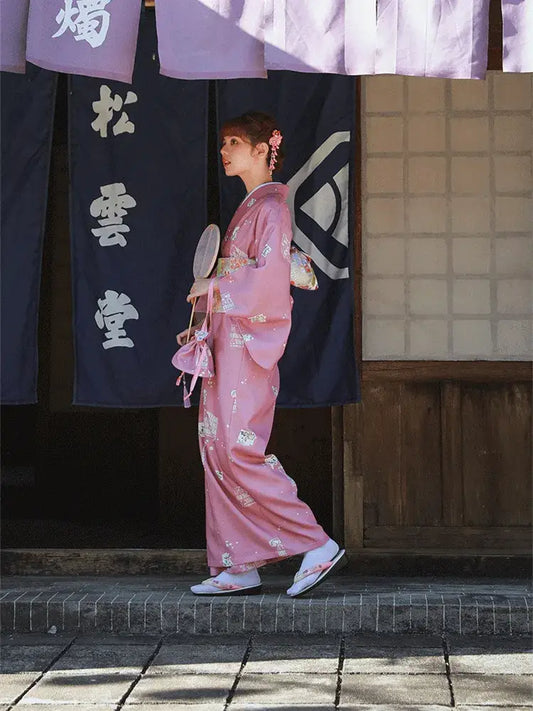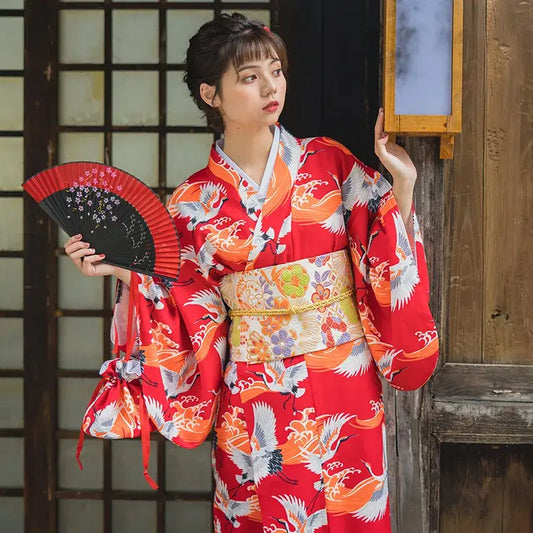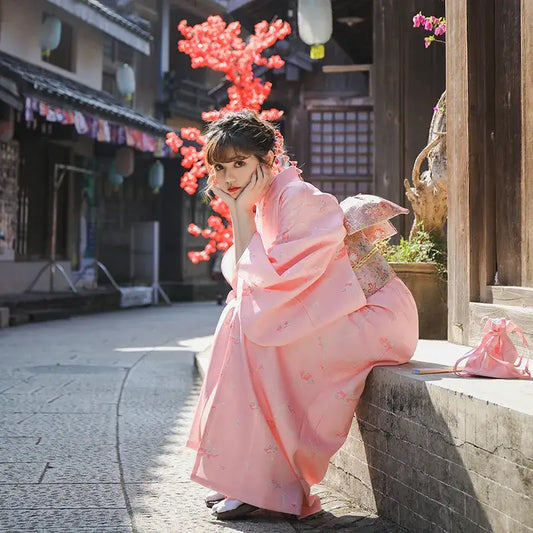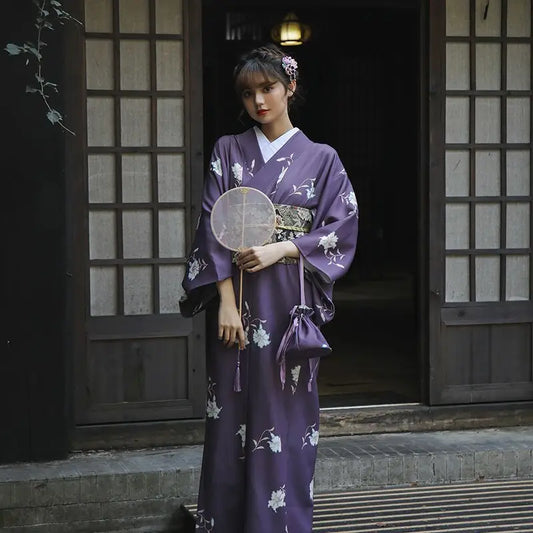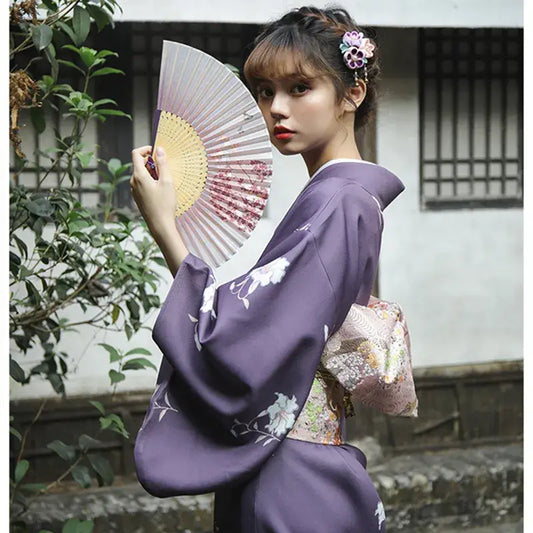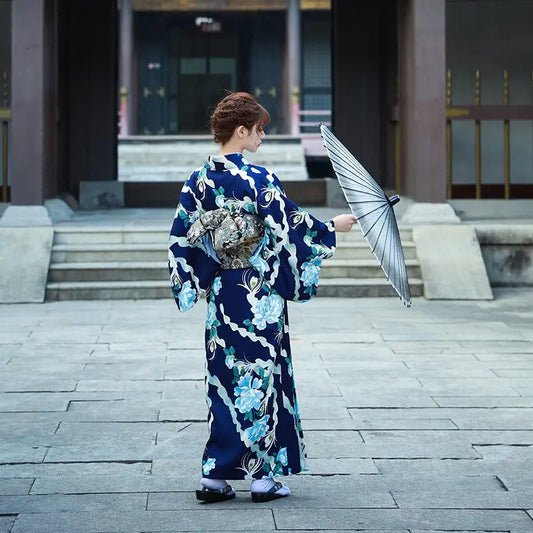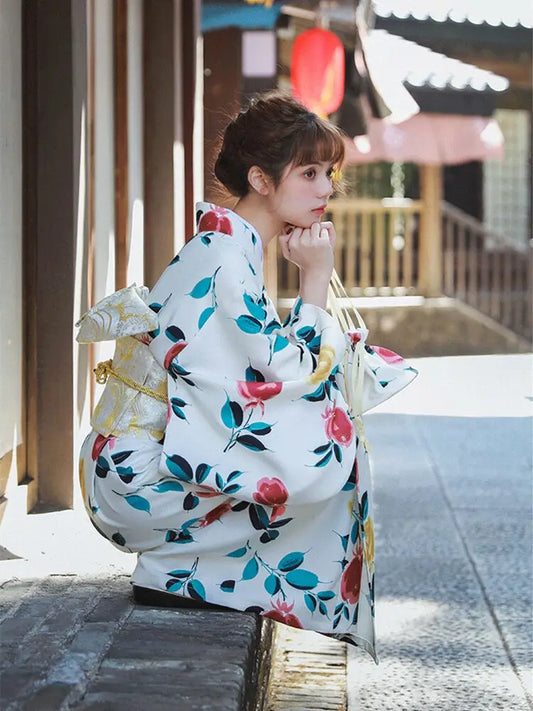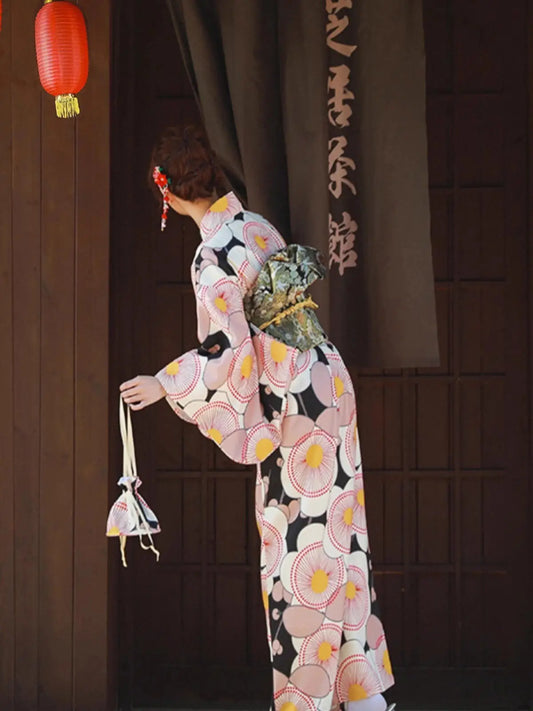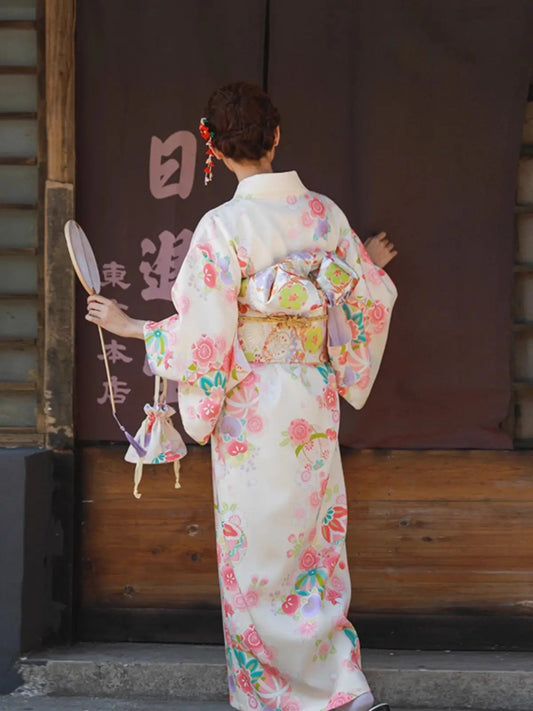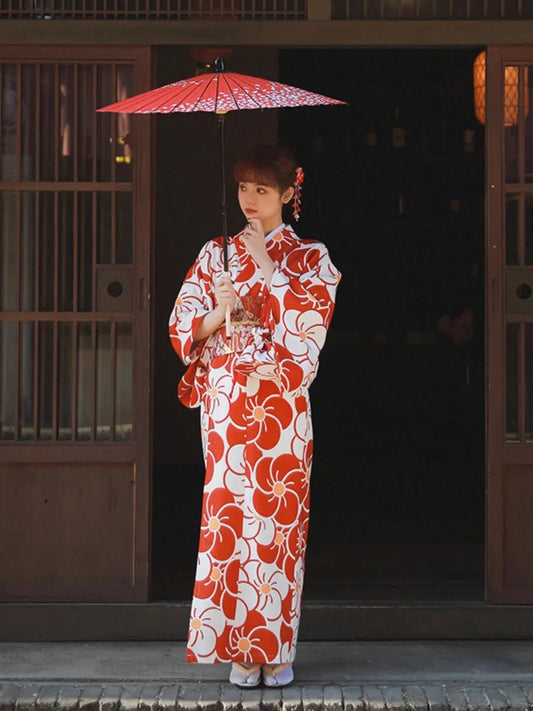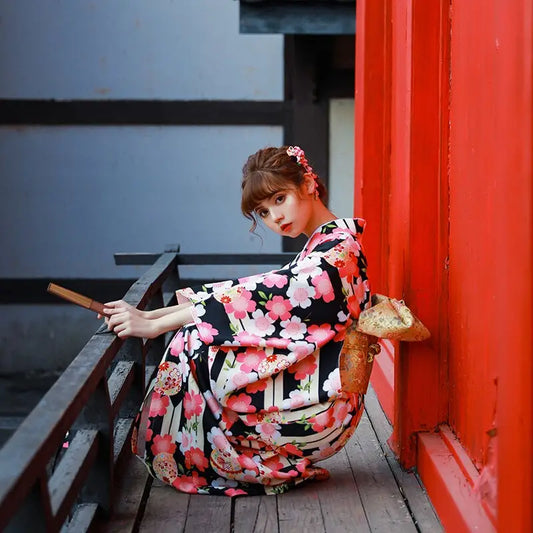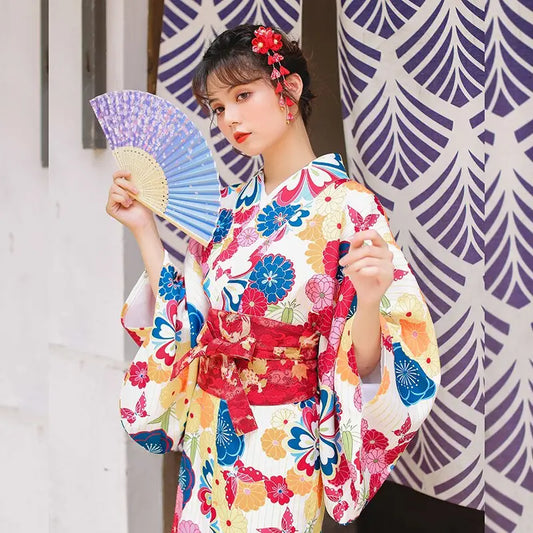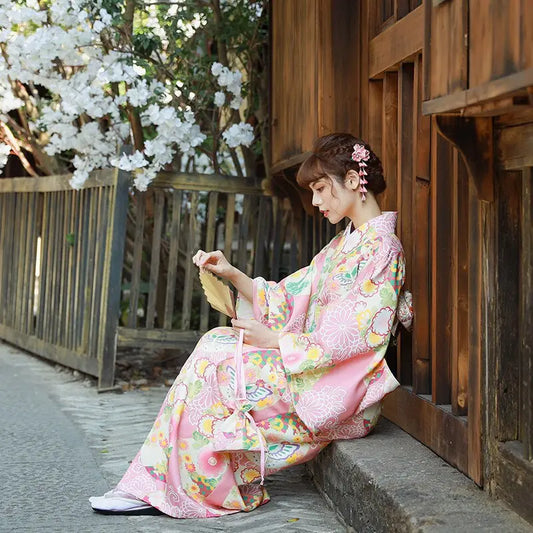Enter the World of Grace: The Majesty of the Kimono
Welcome to a realm where every fold tells a story, every thread carries centuries of tradition, and every silhouette radiates elegance — welcome to the world of the Kimono. Revered as the ultimate symbol of Japanese heritage and refinement, the kimono is more than just a garment; it is a cultural icon, a wearable art form, and a vessel of timeless grace. 🌸
Whether you're new to Japanese aesthetics or a passionate devotee, the kimono offers an unmatched experience in personal expression and ceremonial beauty. From formal weddings to casual summer festivals, the kimono transforms every moment into a statement of sophistication.
Our curated Kimono collection spans from luxurious silk furisode to light, breathable yukata, each piece handpicked for its artistry and story. When you wear a kimono, you're not merely dressing up — you're stepping into a centuries-old tradition that still influences the future of global fashion. ✨
The Soul of the Kimono: History, Types, and Symbolism
The word kimono (着物) simply means "thing to wear," yet its meaning and role in Japanese life have been profound for over a thousand years. Originally adapted from Chinese Hanfu during the Heian period (794-1185), the kimono has evolved through time to reflect Japan's aesthetics, seasons, and social structures.
From ceremonial opulence to everyday simplicity, the kimono is a living record of Japanese culture. Each style has a purpose, and each motif carries meaning. Here are a few main types:
| Kimono Type | Purpose & Significance |
|---|---|
| Furisode | Worn by young, unmarried women; known for long, swinging sleeves |
| Tomesode | Formal attire for married women; features patterns below the waist |
| Yukata | Casual summer kimono made from cotton; perfect for festivals |
| Homongi | Semi-formal; worn by both married and unmarried women |
| Montsuki | Men's formal black kimono with family crest |
Beyond structure, motifs like cranes (longevity), cherry blossoms (beauty, transience), and waves (resilience) turn each kimono into a walking poem. The colors, too, follow the Japanese concept of seasonal harmony, enhancing not only the wearer's aura but also their alignment with nature.
Wearing a kimono is a ritual in itself — one that embodies grace, symmetry, and reverence.
Why the Kimono Continues to Captivate the World
Despite the rise of modern attire, the kimono remains a symbol of cultural pride and fashion sophistication. Here's why this iconic garment holds a firm place in contemporary wardrobes and hearts:
-
Cultural Powerhouse: The kimono stands as an ambassador of Japanese identity. Its presence in anime, cinema, and global fashion shows bridges ancient artistry with modern relevance.
-
Versatile Styles: From ultra-formal to casual chic, there is a kimono for every occasion. Mix and match with Western wear for a fusion look or go full-traditional for authenticity.
-
Unisex & Inclusive: Though historically gendered, modern kimono culture embraces fluidity. Gender-neutral designs and flexible draping allow for diverse expression.
-
Sustainably Stylish: Many kimonos are made using handwoven silk or natural fabrics, built to last generations. Vintage kimono markets are also flourishing, promoting circular fashion.
-
Art in Motion: Wearing a kimono is a statement. Each movement becomes elegant, each posture deliberate. It turns the everyday into a performance of grace.
Kimonos are not just admired — they are revered. From museums to runways, their structure and symbolism are constantly being reimagined and re-celebrated.
Styling the Kimono in Contemporary Fashion
While the traditional kimono requires a complex layering and tying process, modern interpretations make it more accessible and adaptable. Here are ways to style your kimono for both cultural integrity and fashion-forward impact:
-
Traditional Elegance: Pair your kimono with a matching obi (sash), zori sandals, and a nagajuban (under-kimono). Use hair accessories like kanzashi for formal flair.
-
Fusion Fashion: Layer a short kimono jacket over jeans and a turtleneck. Or wear a long kimono robe over a sleek dress and belt it for silhouette.
-
Minimalist Modern: Choose a solid-color kimono and pair it with neutral tones. The texture and cut will do all the talking.
-
Bohemian Layering: A floral or tie-dyed kimono-style robe can be worn with boots, a hat, and chunky jewelry.
-
Lounge Luxe: Silk kimono robes make for luxurious homewear. Elegant, soft, and cinematic.
| Style Type | Kimono Type | Pairing Suggestions |
| Traditional | Furisode, Tomesode | Obi, Tabi socks, Kanzashi, Zori |
| Fusion | Yukata, Haori | Denim, Tees, Belts, Ankle boots |
| Minimalist | Homongi | Neutral underlayers, Fine jewelry |
| Boho-Chic | Kimono Robes | Flared pants, Leather sandals, Layered beads |
| Loungewear | Silk Kimono | Slippers, Eye mask, Delicate scented oils |
Let the kimono elevate not only your wardrobe but also your mindset. It’s a garment that encourages grace and presence in how you move through the world.
Perfect Pairings: What to Wear With a Kimono
To unlock the full aesthetic potential of a kimono, thoughtful pairing is key. Here’s how to accessorize and layer for traditional charm or contemporary chic:
-
Footwear: Traditional zori or geta sandals complement formal kimono. For modern flair, try ankle boots, mules, or sleek heels.
-
Undergarments: A hadajuban (inner robe) helps maintain the kimono’s form and adds comfort. For casual looks, a tank or crop top works beneath lighter robes.
-
Bags and Pouches: Choose compact, elegant options like the kinchaku (drawstring pouch) or small clutches. For fusion styles, crossbody or leather mini bags work great.
-
Hair & Accessories: For formal events, elaborate updos with combs and pins complete the look. For casual days, keep it effortless with a messy bun or soft waves.
-
Seasonal Layers: Pair kimonos with haori (short jackets), shawls, or coats that respect the kimono’s structure.
| Pairing Item | Best With | Why It Works |
| Zori or Geta | Furisode, Tomesode | Completes the traditional aesthetic |
| Obi Belt | All kimono types | Defines silhouette, adds artistic contrast |
| Kinchaku Bag | Homongi, Yukata | Compact, traditional, elegant |
| Minimal Jewelry | Modern Kimono Styles | Lets the garment shine, adds subtle detail |
| Silk Undergarments | Formal Kimono | Comfort, tradition, elegance |
Every accessory should support the narrative the kimono tells. Whether that story is formal and ceremonial or relaxed and artistic is up to you.
The Kimono Renaissance: Owning Your Story Through Fabric
The kimono is undergoing a renaissance — not as a relic, but as a symbol of renewed identity and global creativity. Fashion designers, cultural enthusiasts, and everyday wearers are reclaiming the kimono as a living garment with endless possibility.
In this era of fast fashion, the kimono offers a mindful alternative: garments crafted with skill, worn with intention, and cherished across lifetimes. It is heritage, self-expression, and future-forward thinking woven into one timeless silhouette.
Explore our Kimono collection to find the piece that speaks to your spirit. With authentic vintage finds, contemporary interpretations, and handcrafted artisan kimonos, our store is a portal to elegance, culture, and personal empowerment.
Don the kimono. Embrace the story. Wear history like it was made for you — because it was. 🌸✨


